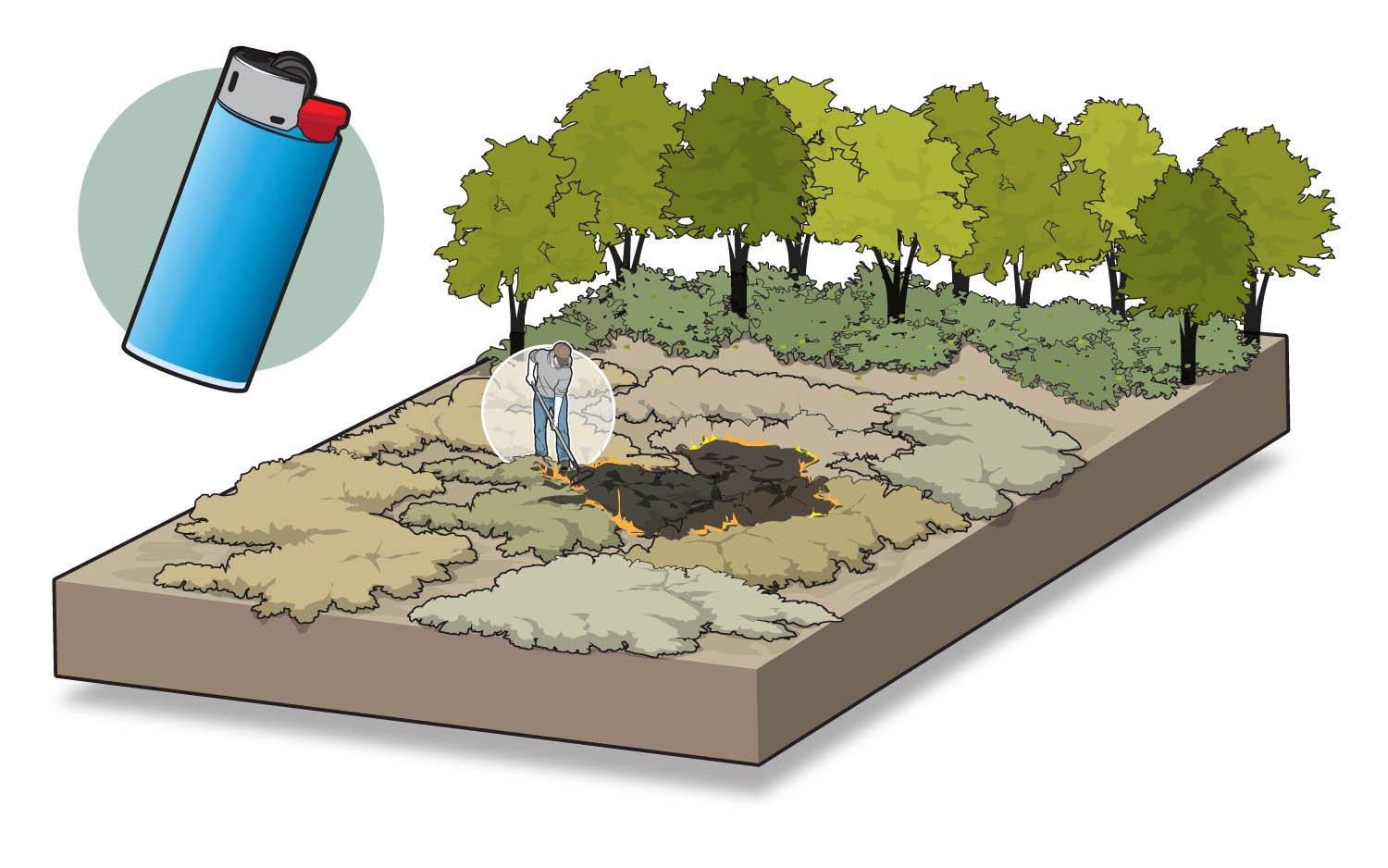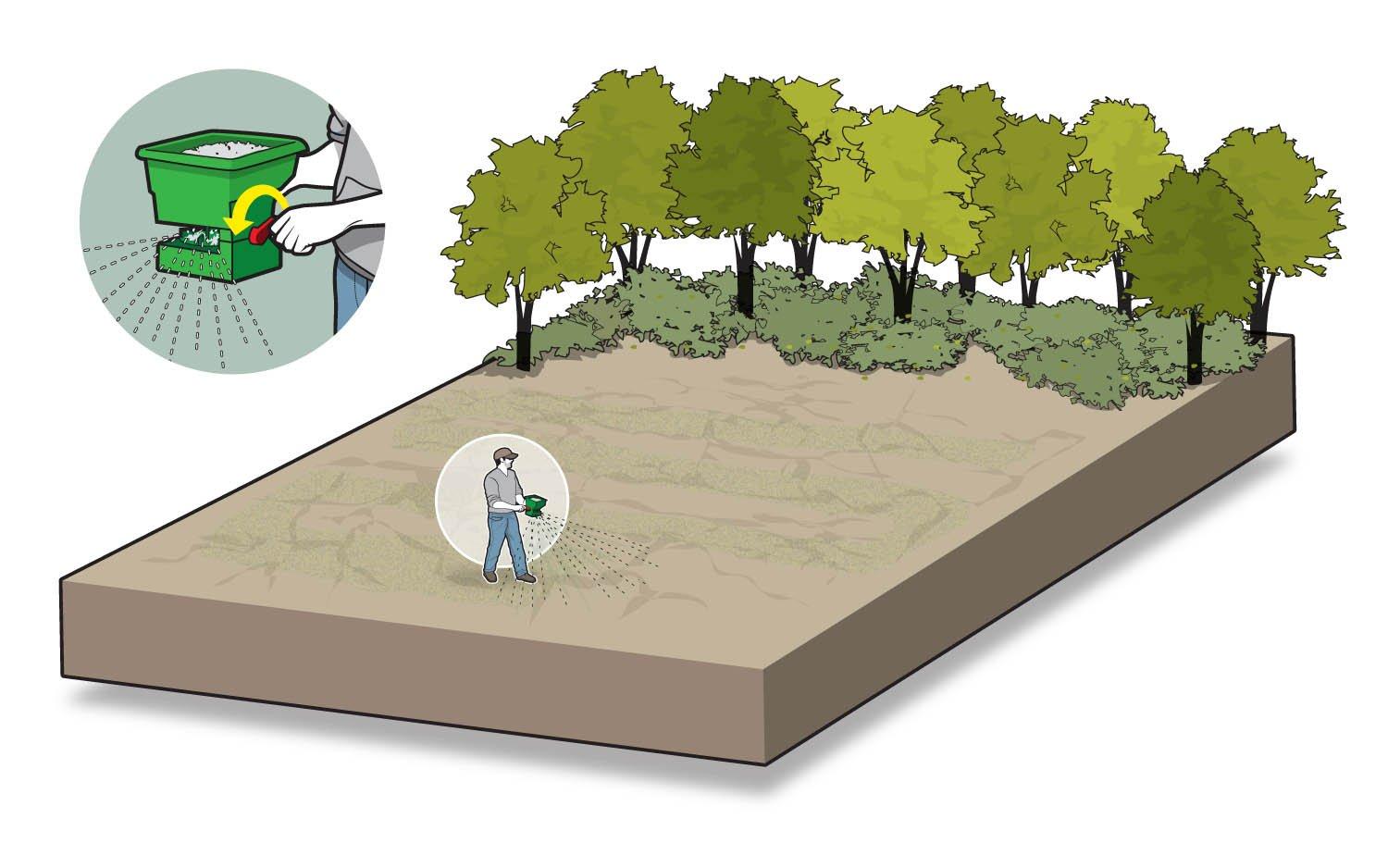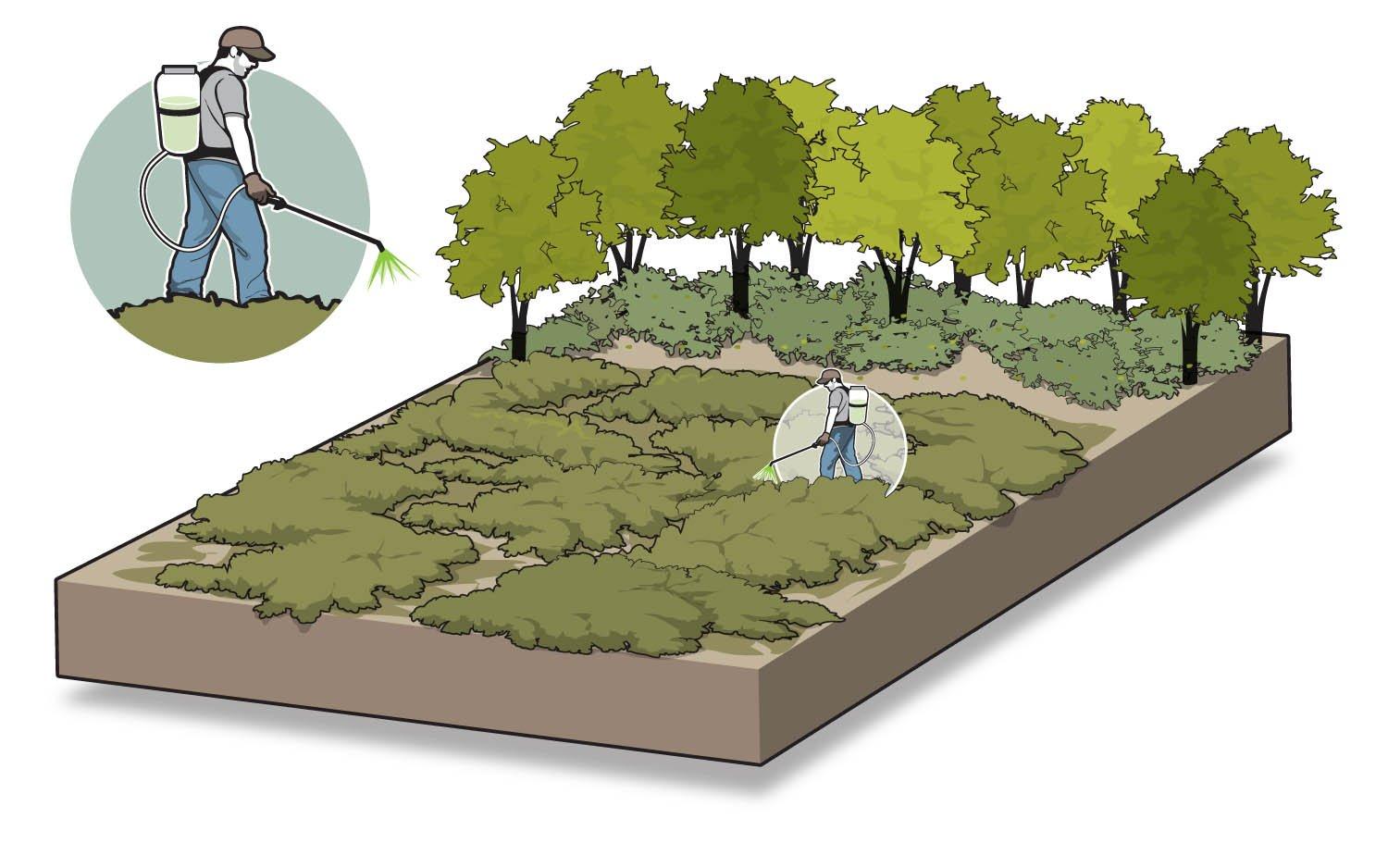Make a Food Plot Without a Tractor
Editor's Note: This Realtree Retro content first appeared on March 20, 2012.
I'm a different sort of food plotter.
I own less than 20 acres. In fact, about 50 percent of my hunting each year will be done on public land. I don't own any heavy equipment. Aside from an ATV, all of my food plot "implements" can fit in a backpack.
I'll establish somewhere around five acres of plots each year, though. And it won't take me much more than two or three days time total for each area. Surprised? Well, you can do it too.
Before we jump in here, I'd like to offer a bit of a disclaimer. I'm not a farmer. I'm not even a gardener. Sort of the opposite actually. I edged my yard once with an ATV and a snowplow. The advice I offer is based on trial and error. I'm sure some of it goes against conventional food plot wisdom and there are probably better ways of doing it. That's OK. What I'm talking about isn't conventional, and I think just about everything can be improved in some way. I'm not going to focus on soil testing and PH levels and all that. I'm sure those things help but I'm more interested in killing deer than maximizing tonnage. This system might be a bit elementary, but it works. I promise you that.
Generally speaking, there are two types of food plots: 1. Plots that are designed to provide supplemental nutrition over a prolonged period of time; or 2. Plots set up for killing deer.
As much as I'd like to plant some big plots, I'm just not in a situation for that. Like I said, I don't own land or lease big acreage. I hunt primarily on pieces of less than 100 acres that I gain by asking landowner permission. Virtually all of those farms are also hunted by others. Many times I don't even know who the other hunters are or how many of them are hunting. So I choose to establish small, technique-specific plots in areas that only I know about. Here's how I do it.
THE TOOLS
The biggest plot I'll plant this year will be about 1 acre in size. The others will be much smaller. I'm not looking to feed deer over an extended period of time. I'm looking to establish areas that will position deer where I want them to be.
To establish these types of plots you need minimal tools: A hand-held sprayer (about $15), herbicide (about $20/acre), a small folding saw (about $20) and a lighter (about $2) will take care of the bulk of the work. A metal-tined hand rake is helpful as well. A ThermaCELL and bug spray are essential for summer planting. Trust me on that.
I do use an ATV from time to time but only to transport seed, tools and materials. I don't own or use any ATV-mounted implements for establishing my plots. With that said, an ATV-mounted sprayer sure would be nice and might be in my future.
THE LOCATION
For these small hand-laid plots, I'm looking for natural openings in areas of thick cover. Remember, I'm hunting heavily pressured areas and sharing land with hunters that I might not know. I want to keep my plots somewhat hidden.
Most farms will have some areas of fallow field growth. These are great places to start. Even in areas of heavy timber, you can find small natural openings.
THE PLOTS

Spring-planted plots are usually comprised of clover or alfalfa and soybeans. I've experimented with brassica blends, sunflowers, etc. All worked to some degree. But I've pretty much settled into a routine that includes a blend of clover, alfalfa and soybeans.
My fall plots are planted in late summer and always include oats. When the soybean fields start to yellow and turn brown, deer change their feeding patterns overnight. Providing them with a sweet, green food source can be dynamite. Oats have proven to be my best option in my home state of Michigan. They green up quickly and flourish when planted in late August or early September, providing that green spot in October -- just as archery season kicks off.
Deer will mow these plots down fairly quickly due to the small size of the plot. That's OK. I intend to kill one while that mowing occurs.
PLANTING
For spring plots, ideally, I'll spray the area I intend to plant the previous fall. Using nothing more than a hand-held sprayer, I can cover areas of less than an acre pretty quickly. A late fall spraying will kill off the weeds and grasses and prevent them from popping up in early spring. When the frost starts to thaw, it's time to plant. The expansion and contraction of the soil during the thaw will set the seed perfectly.

I don't till or disc the areas I intend to plant, primarily because I don't have the equipment to do it. But I've had such good luck just broadcasting on top of the ground that I've never really deemed it necessary to do any tilling.
I do try to plant just before, or during, a good rainfall to help bury the seed. But if I can't, then I'll simply use a hand rake to cover most of the seed.
The majority of the plots I establish will be planted in late summer. Again, I'm not looking to feed deer throughout the year. I'm looking to establish locations that deer will use during the hunting season.
Fall plots are a bit tougher to plant simply because you'll have more weed growth to contend with. But it's nothing a couple of applications of Roundup from a hand sprayer can't handle. One spraying won't do it. You'll want to spray it once, wait two weeks and spray a second time. In some cases, a third application is necessary. You don't want any green left in those weeds or they will come back and choke out your plot.
I've done this in areas where the weeds were chest-high at the end of summer. It wasn't easy, but it worked beautifully. The toughest challenge is clearing the area of the dead weeds. For that, you'll need some old-fashioned sweat equity. A hand rake will pull off the majority of those weeds. Don't worry about getting all of the dead foliage off the plot. In fact, leaving some of it can be beneficial. It'll help hold in ground moisture and protect exposed seeds from birds.
If you have an area that's particularly thick, you can also burn off the dead foliage after it's been sprayed. Obviously, you have to be extremely careful when doing this (and make sure you have the landowner's blessing, of course). But a controlled burn will remove those unwanted grasses in short order and provide nitrogen to the soil as well.
Now with the plot cleared, it's time to plant. Broadcast the seed by hand right on top of the dirt and use a hand rake to cover it. Then it's time to hang stands and trail cameras and count down the days until the season begins.







